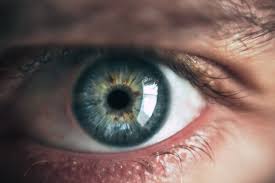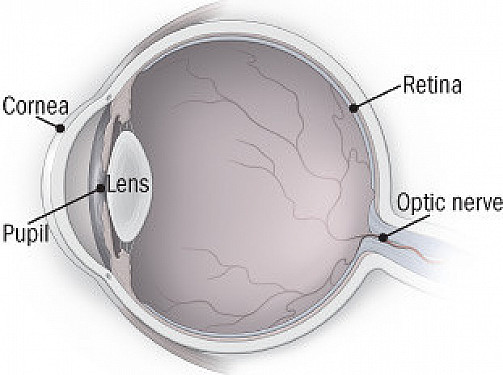If you have suffered a concussion, it is important to be aware of the risk of developing a cataract. A cataract is a cloudy area in the lens of your eye and can lead to vision loss if not treated. Cataracts due to global damage occur in more than 24% of patients worldwide. For blunt trauma patients, this may also result in a concussion cataract if the doughnut force is not released well. In this blog post, we will discuss the symptoms of concussion cataract and how it is treated.
Contents
What Is a Concussion Cataract?
 A concussion cataract is a type of eye condition that occurs in some cases after the head has experienced a traumatic event, such as a head injury or a traumatic brain injury. The result of this trauma is that the lens of the eye can become damaged and cloudy, resulting in blurry vision or difficulty seeing. This type of cataract is considered to be a “secondary cataract,” meaning that it develops after the initial head trauma.
A concussion cataract is a type of eye condition that occurs in some cases after the head has experienced a traumatic event, such as a head injury or a traumatic brain injury. The result of this trauma is that the lens of the eye can become damaged and cloudy, resulting in blurry vision or difficulty seeing. This type of cataract is considered to be a “secondary cataract,” meaning that it develops after the initial head trauma.
Contact with the eye can cause a multitude of ocular injuries including trauma to the lens, cataract formation, dislocation or swelling of the retina, and many more. The mechanism for this type of contact is a traumatic shock wave that travels through the eye.
What Are The Different Types Of Concussion Cataracts?
There are various different types of cataracts. They are as follows:
Blunt Trauma
Blunt trauma to the eye or face leads to injury but not a break, like a punch in the eye. The most common example would be a ball being hit in your eye, which can lead to immediate (cataract) or delayed (cataract with extreme trauma) cataracts.
Penetrating Trauma
When sharp objects, such as a piece of glass, a pencil, or a nail, penetrate and hit the eye, this type of trauma may be expected. A full rupture and damage of the lens can also occur in this situation. It may lead to either partial or full blindness.
Chemical Trauma
This type of trauma refers to the penetration of the eye by a chemically foreign substance that gets into the eye, resulting in an altered composition of lens fibers and ultimately leading to traumatic cataracts.
Radiation Trauma
Radiation exposure can cause a traumatic cataract, which is typically an aftereffect of contact and exposure to radiation. Often, the periods between exposure to radiation and the formation of an eye cataract develop slowly. Cataracts are caused by radiation exposure and occur after contact or penetration with radioactive material.
Thus, these are different types of Concussion Cataracts that are considered.
What Causes Concussion Cataracts?

There are various causes of concussion cataracts. they are as follows:
1. Direct trauma to the eye: A direct blow or physical injury to the eye can cause a concussion cataract. Injuries such as blunt force trauma, gunshot wounds, and road traffic accidents are some of the most common causes of traumatic cataracts.
2. Radiation exposure: Exposure to high levels of radiation can also cause this condition.
3. Diabetes: People with diabetes have an increased risk of developing cataracts, including concussion cataracts.
4. Systemic diseases: Certain systemic illnesses such as lupus and rheumatoid arthritis can also increase the risk of developing a concussion cataract.
In addition, there are various risks which are included as follows:
- Trauma or injury to the head: A major cause of concussion cataracts is due to direct trauma, such as a car accident or a fall from a height. Any sudden force that causes an impact on the head can result in concussion cataracts.
- Sporting activities: Certain sports involve contact and these can cause a concussion leading to cataracts. Such sports include boxing, hockey, football, and rugby.
- Age: The risk of developing a concussion cataract is higher in older individuals as age-related changes can affect the lens structure.
So these are risk factors associated with developing a concussion cataract.
Symptoms of Concussion Cataracts
Concussion cataracts can cause a number of symptoms, including:
1. Blurry vision: People with concussion cataracts may experience blurred or double vision due to the clouding of the lens.
2. Light sensitivity: Increased sensitivity to bright lights is a common symptom associated with this condition.
3. Disrupted color perception: Concussion cataracts can cause colors to appear washed out or faded.
4. Headaches and eye pain: People with concussion cataracts may experience persistent headaches or eye pain due to changes in their vision.
5. Difficulty focusing: As the lens continues to cloud, focusing on objects at different distances can become increasingly difficult.
Diagnose
There are various diagnoses of concussion cataracts. They are various differential diagnosis and are as follows:
- Slit Lamp Examination: In this examination, the doctor will examine the eyes with a special microscope to look for signs of injury and inflammation in the eye.
- Funduscopy: This test may also be performed by your doctor to check for damage or swelling on the back surface of the eye.
- Ultrasound Imaging: This imaging test allows doctors to see if there is any damage or swelling in the eye.
Treatment Options For Concussion Cataract
There are two questions that come up when discussing the surgery for traumatic cataracts. First, should primary or secondary cataract surgery be performed? Secondly, what is the most appropriate technique if primary or secondary surgery is needed? In cases in which there exists significant vision loss from damage to the eye, conservative management would be used with lens preservation unless there is also existing damage to the lens.
For injuries involving the lens, if it has been completely damaged. All cortical material has been removed and dispersed in the anterior chamber, and removal of the distal cornea is done at exactly the same time as the repair of a laceration in this area. The secondary procedure would involve repairing corneal lacerations while removing cataracts.
There are various treatment options:
- Intraocular Lens Implant: This is the most common treatment option for concussion cataracts. It involves replacing the eye’s natural lens with an artificial one in order to improve vision.
- Laser Treatment: This procedure uses a special laser device to remove any scar tissue that has developed as a result of the concussion.
- Corticosteroid Injection: This type of injection can help reduce inflammation and scarring around the lens, which can restore some vision in the affected eye.
- Surgery: Depending on the severity of the cataract, surgery may be needed to remove it completely from your eye and replace it with a clear artificial lens.
It is important to speak to your doctor before deciding on a treatment plan for concussion cataracts, as each patient’s needs and circumstances are unique. Your doctor can provide guidance and advice on the best approach for you.
Prevention
There are various preventions methods :
1. Wear protective eyewear when participating in activities that may cause injury to the eye, including playing sports or any other activity that involves flying objects or projectiles.
2. Wear a face shield, helmet, and/or goggles if you are involved in contact sports or using hazardous equipment, such as chainsaws or lawnmowers.
3. Seek immediate medical attention if you have any signs or symptoms of a concussion, including vision changes, headaches, dizziness, and nausea.
4. Use caution when performing activities that may cause a head injury or trauma to the eye area such as boxing, martial arts, or wrestling.
5. Avoid activities that carry a risk of concussion, such as high-velocity motorsports.
6. Get regular eye exams to detect any changes in vision early on and ensure that your eyes are healthy. Early detection and treatment can help prevent the development of a permanent cataract due to concussion trauma.
7. Practice proper concussion management and follow the advice of your healthcare provider to reduce the risk of long-term complications.
8. Get adequate rest after sustaining a head injury and avoid activities that could worsen any existing symptoms. If symptoms persist, seek medical advice from a qualified healthcare provider.
With a few simple precautions, you can help protect yourself from developing a concussion cataract. Be aware of the risks associated with activities that could lead to head trauma, take appropriate safety measures, and seek medical attention if you experience any symptoms of a concussion or vision changes. By taking these simple steps, you can help protect your eyes and enjoy the activities that bring you joy without worrying about long-term complications.
Conclusion
It may be concluded that concussion cataract is a serious condition that should be taken seriously. Early diagnosis and treatment are essential in order to prevent long-term complications or even blindness. If you have signs or symptoms of this type of cataract, it is important to seek medical attention right away. With the right treatments and precautions, many people can enjoy improved vision and fewer side effects from this serious condition.
If you have any questions or concerns about concussion cataracts, talk to your doctor. They can provide the best medical advice and resources for managing this condition. With early diagnosis and treatment, you can reduce the risk of long-term complications or even blindness. Take the necessary steps to protect your vision and maintain a healthy lifestyle. With the right care and knowledge, you can enjoy a clear and healthy vision for years to come.
Cataract surgery is a safe and painless procedure. At MantraCare we have a team of experienced eye surgeons, who will be happy to answer any questions on cataract surgery. Call us at +91-9711116605 for any inquiries.
